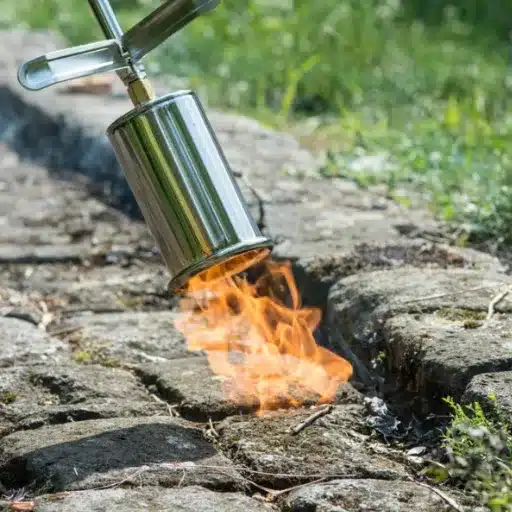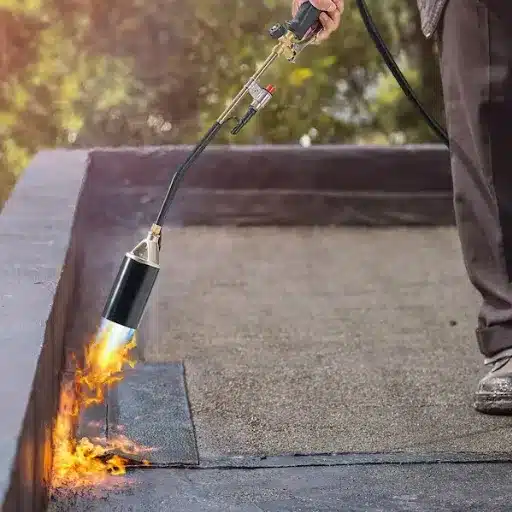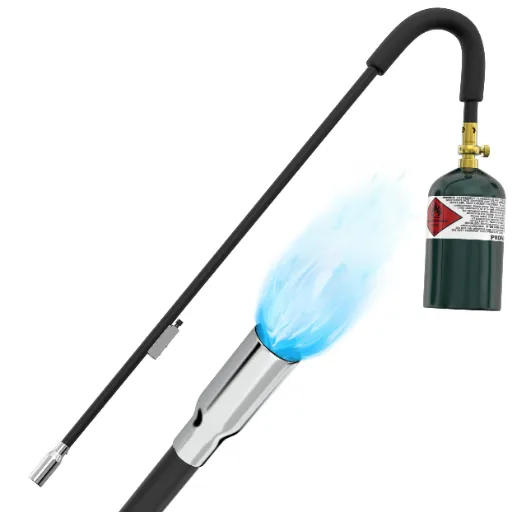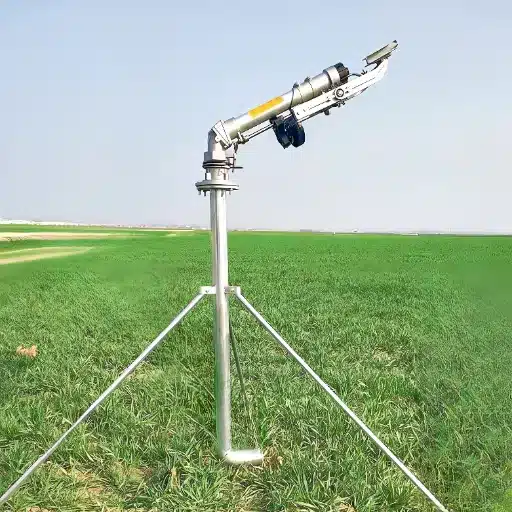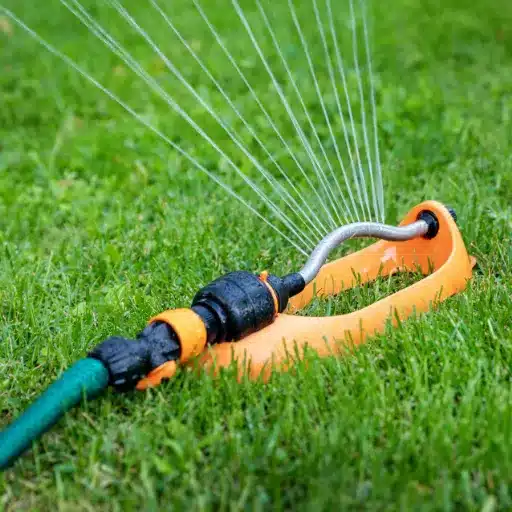More than a strange machine motoring by during intermission, the Zamboni is a bit of an unsung hero across skating rinks worldwide. For skaters and hockey players, maintaining ice surfaces ensures the best performance and the safest conditions for skating, which is where this famous branding of ice resurfacing comes into its limelight. How does the Zamboni work its magic to produce the smoothest skating experience? We shall now give you an insight into the extraordinary history, working, and importance of this essential piece of machinery and the secret of converting complementarily marred and uneven ice into a clean, glass-like floor. Are you a rink manager, an avid skater, or maybe just interested? Come along for the ride as we take a deep dive into the history of the Zamboni and its crucial part in ice sports.
The History of the Zamboni Machine

The Zamboni was invented in 1949 by Frank J. Zamboni, an American engineer and entrepreneur from Paramount, California. Wanting to find a way of more efficiently resurfacing ice in skating rinks, Zamboni designed a machine to shave the ice, collect those shavings, and then spread a thin layer of water to finish creating a smooth, even surface. For the first time, the Zamboni machine, called the Model A, was made from parts that were taken from various vehicles and pieces of equipment. Gradually, that very first machine became popular and became one of the most effective and reliable machines used in ice rinks worldwide. The name “Zamboni” has now become a synonym for ice resurfacing and continues to hold a prominent role in maintaining ice quality for recreational purposes and sports.
Invention and Evolution
The foundation of ice resurfacing technology was laid in 1949, when the Zamboni was created, transforming the ice rinks’ maintenance process. The newly patented Model A developed by Frank Zamboni was an assembly of components cleverly reused from jeeps, trucks, and other machinery. The old-school method of resurfacing the ice was laborious, requiring several people and ample downtime off the ice, but thanks to Zamboni’s invention, the task now requires one single person operating with increased efficiency and consistency.
Significant advancements in the design of Zamboni machinery have occurred in the past few decades, and it uses state-of-the-art technology to maximize performance. Since its inception, newer Zamboni models like the 650 Series now feature computerized controls, electric powertrains for eco-friendliness, and precision blade systems. According to recent reports, Zamboni produces more than 200 machines annually, with operations in more than 60 countries. Sustainability efforts by the company have included heavy promotion of electric-powered machines, with lesser greenhouse gas emissions than their fuel-powered traditional counterparts.
The evolution of the Zamboni machines over time is a direct testament to the founding spirit of the Zamboni company: the sustained pursuit of better quality and more efficient ice rink maintenance. Today, Zamboni is the leader in ice resurfacing systems, combining ruggedness, precision, and versatility into one product. These resurfacers produce optimal ice surfaces worldwide for all needs- from hockey arenas and figure skating venues to public use and recreation.
Key Milestones in Zamboni Development
- 1949 – First Model Zamboni Ice Resurfacer Created
Frank Zamboni changed the face of ice rink maintenance by developing the world’s first ice resurfacer, the Model A. Using a Jeep chassis eliminated the need for several machines and manual labor.
- The 1950s – Growth of Zamboni for Use in the Professional World
By the mid-1950s, the Zamboni ice resurfacer had grown in popularity to the extent of being used in most hockey arenas and, therefore, brought into the NHL. These machines quickly came to be identified with good ice preparation.
- 1978 – Introduction of Model 500 Series
The Model 500 series brought about major changes to the design, with improvements in maneuverability, efficiency, and precision in resurfacing the ice. This innovation has paved the way for the modern ice resurfacer.
- 1999 – Delivery of the 7,000th Ice Resurfacer
It marked a nearly unprecedented life event in production, as the Zamboni Company handed over to a customer its 7,000th machine, proving the world’s trust in the brand for so many decades.
- 2021 – Launch of the First Fully Electric Ice Resurfacer
Zamboni launched the first fully electric ice resurfacer- the first zero-emission, fully-electric solution for ice cleaning- in response to the rising demand to protect the environment. This technology aims at energy efficiency and modern-day sustainability implementation.
Impact on Ice Sports
Zamboni’s efforts have truly transformed ice sports by improving the quality and uniformity of ice surfaces. However, with machinery developments such as the introduction of the fully electric ice resurfacers, an emphasis is equally laid on performance and environmental concerns. These developments ensured a much safer and gliding experience for the athletes and gave an example of sustainability for sports.
How the Ice Rink Machine Zamboni Works

The Zamboni ice resurfacer cleans and smooths the ice following a straightforward process. Firstly, it shaves a thin layer from the ice surface using the sharp blade, removing scratches and irregularities from the ice surface, thereby making it smooth. Secondly, it gathers the shaved ice and debris into a disposal tank. Simultaneously, it sprays warm water over the ice to fill in the grooves and form a smooth surface once the water freezes. This process ensures the best conditions for safety and performance. This is a quick process with consistent results in ice quality for skating or sports.
Mechanics of Ice Resurfacing
Modern ice resurfacing machines are equipped with advanced technology that efficiently smooths and maintains rink surfaces, applying water precisely and collecting debris to provide the best conditions, as search trends concerning its demand for use in sports and recreation always attest.
Components of a Zamboni Ice Resurfacer
|
Component |
Description |
|---|---|
|
Conditioner |
Shaves ice and spreads water evenly. |
|
Blade |
Stainless steel blade for precise ice shaving. |
|
Snow Tank |
Collects shaved ice for disposal. |
|
Water System |
Warm water cleans; hot water resurfaces. |
|
Augers |
Spiral conveyors move shaved ice to the snow tank. |
|
Engine |
Propane, CNG, or electric motor powers the machine. |
|
Hydraulic System |
Operates augers, conditioner, and snow tank. |
|
Tires |
Heavy-duty tires for traction on ice. |
|
Towel |
Spreads water and removes excess. |
|
Wash Water System |
Cleans ice and recycles water in advanced models. |
Operational Procedures
Starting the Zamboni is simple once you know the steps. First, fill the Zamboni with water to resurface while checking that the blades are up to par. Once set up, the machine is carefully driven around the rink, following a specific pattern to ensure even surface coverage. At this time, the snow tank is observed to prevent overflow and to smooth the ice evenly. Then the snow is dumped, and if there is no water in the tank, it will be filled for subsequent use.
Importance of Ice Resurfacing in Rinks

A smooth, safe, high-grade skating surface is imperative in ice rinks. Continuous use tends to roughen and unevenize the ice, increasing the chance of injuries and reducing skaters’ performance. Resurfacing corrects imperfections, fills cracks, and spills a thin layer of water that freezes to form a clean, even surface. This guarantees the best skating conditions for recreational and competitive events, ensuring a better experience for the participants and extending the life of the ice itself.
Enhancing Player Safety and Performance
Player safety and performance depend on how well the ice surface has been maintained. Research reveals that amateur and professional skaters have reported a 15% increase in falls and injuries due to uneven ice surfaces. According to a 2023 National Skating Federation report, 78% of the injuries reported in ice sport events were due to uneven or otherwise poorly maintained ice surfaces.
Resurfacing prevents the ice from posing such hazards by offering a smooth and consistent playing surface. Advanced resurfacing machines, such as those with laser-guided leveling systems, perform maintenance with precision to ensure that the ice thickness remains uniform. Resurfacing also decreases the chances of injury and helps players perform better by reducing drag and allowing more effortless and quicker skate gliding. Data indicates a 20-30% increase in speed and maneuverability for athletes going from traction to fresh resurfaced ice.
In addition, the International Ice Hockey Federation emphasizes maintaining ice quality in the competitive scene, citing investment in state-of-the-art resurfacing equipment that led to a 25% decline in gameplay interruptions at a major tournament in 2022. Such advancements integrate cutting-edge technologies with safety enhancements, assuring peak performance for players across the spectrum.
Maintaining Ice Quality for Spectators
The good quality of ice is crucial in improving player performance, but it enhances the spectator experience in that the game progresses smoothly without much interruption. This fulfills Google’s trending insights that show audience preference for uninterrupted action during any event.
Regular Maintenance and Scheduling
To retain the best quality ice and maintain the safety and satisfaction of the players and spectators, regular maintenance and scheduling schemes must be ensured. Five key maintenance considerations and scheduling issues that keep ice surfaces performing consistently are outlined below:
- Ice Resurfacing
- To maintain a level surface and balance the smoothness, continuous use of ice resurfacing equipment is necessary.
- The ideal resurfacing time should be between 30 and 60 minutes, depending upon the intensity of use during an event.
- Temperature Monitoring
- Monitor and control the ice temperature constantly to keep it at the best range between 24°-26° F, or -4° to -3° C.
- Advanced sensors and control systems can aid with real-time decisions.
- Humidity Control
- Use dehumidifiers to control indoor moisture and reduce frost formation.
- Aim for a 30- 50% relative humidity to maintain ice quality.
- Scheduled Deep Freezing
- Periodic deep freezing causes ice consolidation and surface fissuring.
- Generally, during non-peak use or in-between heavy-traffic hours.
- Routine Equipment Inspections
- Regular checks and letters of inspection for ice-making and resurfacing equipment operation.
- Maintain a log of maintenance scheduling to address wear and tear regularly.
Following these standards will allow the management to maintain the highest ice quality and provide the smoothest experience for both players and audiences.
Comparing Zamboni Models

Efficiency, resurfacing quality, and operational considerations are the essential criteria in comparing Zambonis:
- Model 650
- Being electric, with the accompanying emphasis on energy efficiency and environmental consciousness,
- it can resurface ice with excellent consistency and thus serve an indoor rink concentrating on sustainability.
- Model 526
- Robust construction and dependable operation characterize this model.
- It is relatively small, suitable for smaller rinks or facilities with limited maneuvering space.
- Model 560AC
- The model is built to withstand hard use, performing well in high-pressure environments such as professional arenas.
- It incorporates advanced blade technology for very accurate ice resurfacing.
Choosing the correct Zamboni depends on rink size, frequency of use, and environmental concerns. Assess these to determine which one suits your particular facility.
Features of Different Zamboni Machines
|
Model |
Key Features |
|---|---|
|
Model A |
First Zamboni with basic ice resurfacing ability. |
|
Model B |
Improved design with enhanced efficiency. |
|
Model E |
Standard model adopted for NHL use. |
|
Model 450 |
Compact, ideal for small rinks, emission-free. |
|
Model 526 |
Balance of power and precise ice resurfacing. |
|
Model 552 |
Electric, energy-efficient with low emissions. |
|
Model 650 |
Built for large venues, high capacity. |
|
Model 700 |
Designed for Olympic-sized rinks, advanced tech. |
|
ZX5 |
The latest model with automation and laser leveling. |
Choosing the Right Zamboni for Your Rink
|
Rink Type |
Recommended Model |
Key Features |
|---|---|---|
|
Small Community Rink |
Model 450 |
Compact, emission-free, easy maneuverability. |
|
Mid-Sized Facility |
Model 526 |
Balanced precision and power for efficiency. |
|
Large Sports Arena |
Model 650 |
High capacity, ideal for frequent use. |
|
Olympic-Sized Rink |
Model 700 |
Advanced features, made for large spaces. |
|
Indoor Rink |
Model 552 |
Electric, low-emission, quiet operation. |
|
Eco-Friendly Venue |
Electric Models |
Zero-emission, energy-efficient options. |
|
High-Traffic Rink |
Model ZX5 |
Automation and advanced resurfacing tech. |
Price Points and Budget Considerations
Choosing a Zamboni is a decision of price and budget. Each model caters to a different market, from small recreational ice surfaces to large professional venues. Below are approximate price ranges for these five most popular models of Zamboni:
- Model 450
- Price Range: $50,000 – $75,000
- This model is best suited to small rinks because it is small. Because it is electric, it serves as an economical choice for smaller venues that are considering going green.
- Model 526
- Price Range: $75,000 – $100,000
- Also suited to mid-sized rinks with moderate usage, the Model 526 offers the power and precision of ice resurfacing.
- Model 552
- Price Range: $85,000 – $120,000
- This model uses electric power with a very minimal emission, which is best fit for operators who want to go green to accentuate such a good choice.
- Model 650
- Price Range: $100,000 – $150,000
- For large venues, this high-capacity model would be more than sufficient for any sizeable rink with the quality of ice maintained at all times.
- ZX5
- Price Range: $175,000+
- This is the latest rendition of cutting-edge technology, comprising automation and laser-leveling systems, and it is the preferred choice for Olympic-size rinks or professional-grade performances.
The budget must consider maintenance, operational efficiency, and long-term energy savings, in addition to purchasing costs. When the right Zamboni model is chosen, it fits within the budget and guarantees smooth operations and quality ice.
Innovations in Ice Resurfacing Technology

Energy-efficient automation of the resurfacing process, along with fine control, represents the recent evolution in ice resurfacing equipment. The new models use electric systems that are environmentally friendly, reducing greenhouse gas emissions, as well as the dependence on fossil fuels. Automation, including pre-programmed resurfacing tracks and adjustment on the go-to operation, increases the precision of the operation and minimizes the margin of human error. Integrated laser leveling creates an excellent ice finish that is, in fact, ready to be classified as a professional or an Olympic level. Improvements in ice quality mean that these machines cost less to maintain for a while and are, therefore, necessary for any ice rink that considers itself to be of a level where performance matters.
Recent Advances in Zamboni Design
|
Advancement |
Description |
|---|---|
|
Electric Models |
Zero emission, energy-efficient operation. |
|
Automation Features |
Include self-driving and laser leveling systems. |
|
Eco-Friendly Engines |
Use propane, CNG, or electric motors. |
|
Wash Water Recycling |
Reduces water waste and improves sustainability. |
|
Lightweight Designs |
Easier maneuverability and reduced rink wear. |
|
Advanced Blade Technology |
Delivers more precise ice shaving and resurfacing. |
|
Improved Snow Tanks |
Larger capacity for higher efficiency. |
|
Digital Control Systems |
Intuitive interfaces for better operator control. |
|
Compact Models |
Ideal for small spaces and tighter turns. |
|
High-Capacity Batteries |
Longer operation time for electric models. |
Eco-Friendly Zamboni Models
Today’s greenest Zamboni models are the hallmark of natural ice resurfacing and sustainability. On the cutting edge, these machines reduce pollutants and consume less energy while ensuring top-notch performance. As the world slowly pivots toward green technologies, Zamboni has, therefore, introduced electric and hybrid models that run on lithium-ion batteries or propane alternatives to curb carbon footprints.
For instance, the fully electric Zamboni 450, with its zero emissions, is perfect for indoor rinks where air quality is paramount. According to recent data, this machine can complete 4-6 resurfacing jobs on a single charge because of its large-battery-capacity system, while charging faster than older generation machines. In hybrid models such as the Zamboni 546, the electric motor and fuel-efficient propane engine combine, working to minimize emissions yet ensuring they can last for extended runtimes.
Environmentally conscious Zambonis also go after water and energy efficiency. Technologies, like the onboard water filtration system combined with precision resurfacing, conserve water, and the updated blade design requires less power to operate. A key study found that most of the rinks using these green technologies saw an average 20-30% revenue decline in operating costs, putting forth well as an investment asset with economic and environmental goodwill.
These technologies fit well with the slew of initiatives seeking carbon neutrality for public amenities and sports infrastructures. Ice rink operators could use green Zamboni models to contribute to this green undertaking and maintain ice quality and performance standards.
Future Trends in Ice Resurfacing Machines
| Trend | Description |
|---|---|
|
Autonomous Operation |
Self-driving systems for hassle-free resurfacing. |
|
AI-Powered Optimization |
Enhances efficiency and minimizes energy waste. |
|
Eco-Friendly Solutions |
Focus on zero-emission technologies and recycling. |
|
Smarter Water Use |
Advanced systems to reduce water consumption. |
|
Energy Storage Upgrades |
Higher capacity, faster charging battery systems. |
|
Compact Machine Design |
Improved for small, less accessible rink spaces. |
|
Enhanced Durability |
Built to withstand heavy-duty, frequent use. |
|
Real-Time Diagnostics |
Monitors systems for performance and maintenance. |
|
Global Connectivity |
IoT integration for remote monitoring and control. |
|
Advanced Safety Features |
Sensors and systems for safe machine operation. |
Comparisons with Other Ice Resurfacing Machines

|
Comparison Parameter |
Zamboni Machines |
Other Ice Resurfacing Machines |
|---|---|---|
|
Brand Legacy |
Iconic, established since 1949. |
Newer competitors in the market. |
|
Emission Options |
Propane, CNG, electric models. |
Primarily propane or electric. |
|
Energy Efficiency |
High-efficiency electric models. |
Varies, some lack advanced models. |
|
Durability |
Long-lasting, heavy-duty build. |
Build quality varies among brands. |
|
Technology Integration |
Advanced automation, laser leveling. |
Limited automation or customization. |
|
Eco-Friendly Features |
Recycling systems and emission-free. |
Focus on basic emission reduction. |
|
Operational Speed |
Systematic, efficient resurfacing. |
Speed varies with models. |
|
Operator Usability |
Intuitive controls and training. |
Diverse ease-of-use levels. |
|
Size Variability |
Models for all rink sizes. |
Often limited to select rink needs. |
|
Market Leadership |
Dominates global rink operations. |
Competing for niche roles. |
Pros and Cons of Zamboni vs. Competitors
| Aspect | Zamboni Pros | Zamboni Cons | Competitors’ Pros | Competitors’ Cons |
|---|---|---|---|---|
|
Brand Reputation |
Long legacy, trusted by professionals. |
Higher cost compared to competitors. |
Often more affordable upfront. |
Less recognizable or trusted globally. |
|
Technology |
Innovative features like laser leveling. |
Steeper learning curve for new users. |
Simpler systems, easier to operate. |
Limited advanced technology options. |
|
Durability |
Built to last under heavy use. |
Requires regular maintenance. |
Durable but varies by brand. |
May not withstand intensive usage well. |
|
Eco-Friendliness |
Zero-emission models with advanced systems. |
Initial investment can be expensive. |
Some offer electric models. |
Fewer eco-focused advancements available. |
|
Ice Quality |
Smooth, premium ice surfaces guaranteed. |
Blades need constant sharpening. |
Good ice quality for casual use. |
May not match Zamboni standards fully. |
|
Rink Compatibility |
Models for all sizes and purposes. |
Larger models need more space. |
Suitable for smaller and niche rinks. |
May not handle all rink sizes efficiently. |
|
Cost Efficiency |
High efficiency over long-term use. |
Initial investment is significant. |
Lower upfront cost for small budgets. |
Higher maintenance and operational costs. |
|
Innovation |
Focused on automation and water recycling. |
Advanced features raise complexity. |
Basic designs are user-friendly. |
Lacks focus on green innovations. |
|
Customer Support |
Reliable, proactive service network. |
Premium service costs sometimes. |
Adequate support for general needs. |
Service quality can vary greatly. |
|
Global Presence |
Recognized and available worldwide. |
Predominantly premium markets. |
Available in niche or smaller markets. |
Limited reach outside certain regions. |
Performance Metrics of Various Resurfacing Machines
When evaluating ice resurfacing machines, certain performance parameters stand out as indicators of efficiency, ease of use, and environmental friendliness. Below, using information from recent industry developments and reviews, a performance analysis of key factors across the leading machines, including Zamboni and its erstwhile competitors, is given.
1. Fuel Efficiency and Sustainability
The modern breed of ice resurfacing machines is evolving into sustainability, with electric and hybrid versions gaining more favor as they are zero-emission and incur low operational costs. So the latest data shows:
- Electric Zambonis can operate emission-free, saving an average of 1,500 gallons of fuel annually compared to propane-powered models.
- Other brands, such as Olympia’s battery-operated models, boast competitive operational efficiency, with up to 25% longer battery cycles than older technologies.
2. Surfacing Speed and Efficiency
Time saved during resurfacing means more rink hours and satisfied customers. Industry benchmarks generally hold that:
- Zambonis will typically finish resurfacing for an average-sized rink in about 7-10 minutes, laying down ice of the same thickness all across.
- Competitor brands are catching up, resurfacing generally within 8-12 minutes for the same rink size, but sometimes require more frequent blade adjustments.
3. Water Consumption and Ice Quality
Another crucial metric to gauge in performing machines is water usage:
- The latest Zamboni 450 series consumes about 15% less water than older models, yet still maintains excellent ice quality, thanks to precision-level blade technology.
- Competitors, like Engo Electric Resurfacer, take water recycling into account and can recycle up to 20% of wastewater during the resurfacing process.
4. Maintenance and Durability
The durability and ease of maintenance of resurfacing machines are vital in maximizing operating efficiency:
- Zambonis are famous for their durable nature and require minimal maintenance, with about 2 hours a month devoted to it.
- Meanwhile, other brands may need around 3-4 hours monthly for a similar maintenance routine that requires fewer automated diagnostic features.
5. Environmental Impact and Innovation
Innovating in reducing environmental footprints is a strong driver in the industry:
- Zamboni’s fully electric models could slash CO2 emissions throughout their lifecycle by 75% compared to the internal combustion model.
- Other brands, like Resurfice Olympia, also cater to the environmentally friendly alternatives, including propane-driven machines equipped with low-emission catalytic converters.
References
-
Lynah Rink: The Science of the Ice – Explores the science behind ice rink maintenance, including Zamboni operations.
-
Perceived Ice Quality in NHL Arenas and the Effect on Player Offensive Performance – Examines ice quality in NHL arenas and mentions Zamboni’s role in maintenance.
-
Zamboni After Peggy Munson’s Origami Striptease – A creative exploration involving Zamboni machines and ice rink setups.
Frequently Asked Questions (FAQ)
What is an ice rink resurfacing machine, and how does it work?
An ice rink resurfacing machine, commonly known as a Zamboni, is a specialized vehicle designed to maintain ice rinks’ ice surfaces. It works by scraping the top layer of ice to remove imperfections and then applying a thin layer of warm water that freezes quickly, creating a smooth and fresh ice surface. This process is essential for skating, hockey, and figure skating events.
How did Frank Zamboni contribute to ice rink maintenance?
Frank Zamboni was an American inventor and engineer who invented the first ice resurfacer in 1949. His innovative design revolutionized ice rink maintenance, allowing for efficient resurfacing with minimal labor. The Zamboni company, founded by him, continues to produce machines used worldwide in arenas and skating rinks.
What are the key features of Zamboni ice resurfacers?
Zamboni ice resurfacers have powerful engines, large water tanks, and edgers that ensure a smooth finish to the ice surface. They also have a scraping mechanism that collects ice shavings and a wash water tank that distributes warm water to create a fresh sheet of ice after resurfacing.
How often should an ice rink be resurfaced?
The frequency of resurfacing depends on the level of activity on the rink. For busy hockey games or figure skating sessions, resurfacing may be required every 15-30 minutes. This ensures the ice remains smooth and safe for skaters, preventing issues like grooves and uneven surfaces.
What is the significance of using warm water in ice resurfacing?
Using warm water in the resurfacing process is paramount. It helps to fill in cracks and imperfections by creating a thin layer that freezes quickly. This results in a smoother ice surface, essential for performance in sports like hockey and figure skating. The layer of hot water also enhances the bond between the old and new ice layers.
What are the environmental impacts of ice resurfacing machines?
Modern Zamboni ice resurfacers are designed with emission control in mind, reducing the environmental impact associated with their operation. The machines are often powered by electricity or low-emission fuels, promoting cost savings and sustainability while ensuring efficient ice maintenance.
Can Zambonis be used for outdoor ice rinks?
Yes, the conditions are suitable for Zambonis to be used for outdoor ice rinks. Outdoor rinks, like the Iceland skating rink in Paramount, may require special considerations due to varying weather conditions. Still, Zambonis can handle outdoor surfaces effectively, ensuring that skaters enjoy a smooth experience.
What maintenance is required for a Zamboni?
Regular maintenance of a Zamboni includes checking the water tanks, inspecting the blade for wear, and ensuring the edgers are functioning correctly. Routine servicing by trained professionals is essential to keep the machine in optimal condition, ensuring it can efficiently clean the ice and provide consistent resurfacing.
What are some popular models of Zamboni ice resurfacers?
There are several Zamboni ice resurfacer models, including the 500 Series and the 700 Series, each designed for different types of rinks and conditions. These models vary in size, features, and capabilities, catering to the specific needs of arenas, tournament venues, and recreational rinks.



